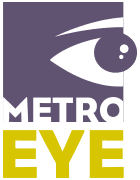

It’s back to school season! Now is the time to make sure your child’s vision is ready for the new school year.
Considering that 75% of what we learn comes through what we see, it’s critically important to make sure students of all ages are thoroughly examined for any issues related to their sight.
Unfortunately, one and four children have an undiagnosed vision problem. Young people’s eyesight may change as they grow, and since these changes are gradual, they often go unrecognized by both the child and their parents or guardian.
Undiagnosed problems with your child’s vision can lead to poor academic performance and behavioral issues in the classroom. Yearly eye exams are incredibly important, yet only 50% of parents with school aged children take their kids to an optometrist every year.
Comprehensive eye exams can diagnose common vision problems like nearsightedness, farsightedness, and astigmatism. They can also spot health problems such as diabetes and high blood pressure, along with more serious eye problems such as glaucoma, colorblindness, and amblyopia (lazy eye).
It is not just elementary school kids who need their vision checked yearly, high school and college-aged students should also make sure to get their eyes examined on an annual basis. Teenagers and young adult students are particularly at risk for eye health issues such as dry eye, eye strain, infections, and injuries.
Here are some important things to consider:
- Pediatric eye exams are very commonly covered by your health insurance, and most plans cover comprehensive eye exams for children every year. The Affordable Care Act defines a comprehensive eye exam as an “essential benefit” and covers its costs, sometimes including glasses, on an annual basis.
- It’s important to monitor your child’s eyesight for any tell-tale signs of vision problems. This includes squinting, reading too close, covering one eye, rubbing their eyes, short attention spans, and complaining of headaches or other discomfort such as burning eyes.
- Eye strain can be a real problem for children and young adults. Considering the amount of screen time most youngsters are exposed to in school and at home, it’s not surprising some will experience digital eye strain. Symptoms include burning or itchy eyes, headaches, blurred vision, and fatigue. Make sure your family is following the 20-20-20 rule (taking a 20-second break, every 20 minutes and looking at something 20 feet away) to help.
- Make sure you protect those precious eyes when participating in sports and outdoor activities. UV protection is important to everyone of all ages, so make sure you always have a pair of sunglasses available. If your child is active in sports, get well-fitting protective eyewear that can help to keep stray balls and elbows from hitting their eyes.
If you have not yet made an appointment for your child, now is the time to do so. Contact Metro Eye to schedule a visit with one of our friendly and knowledgeable optometrists, who will make sure that your child’s eyes are healthy. Remember, eye exams ensure that your family is seeing
and feeling their best for the new school year!

